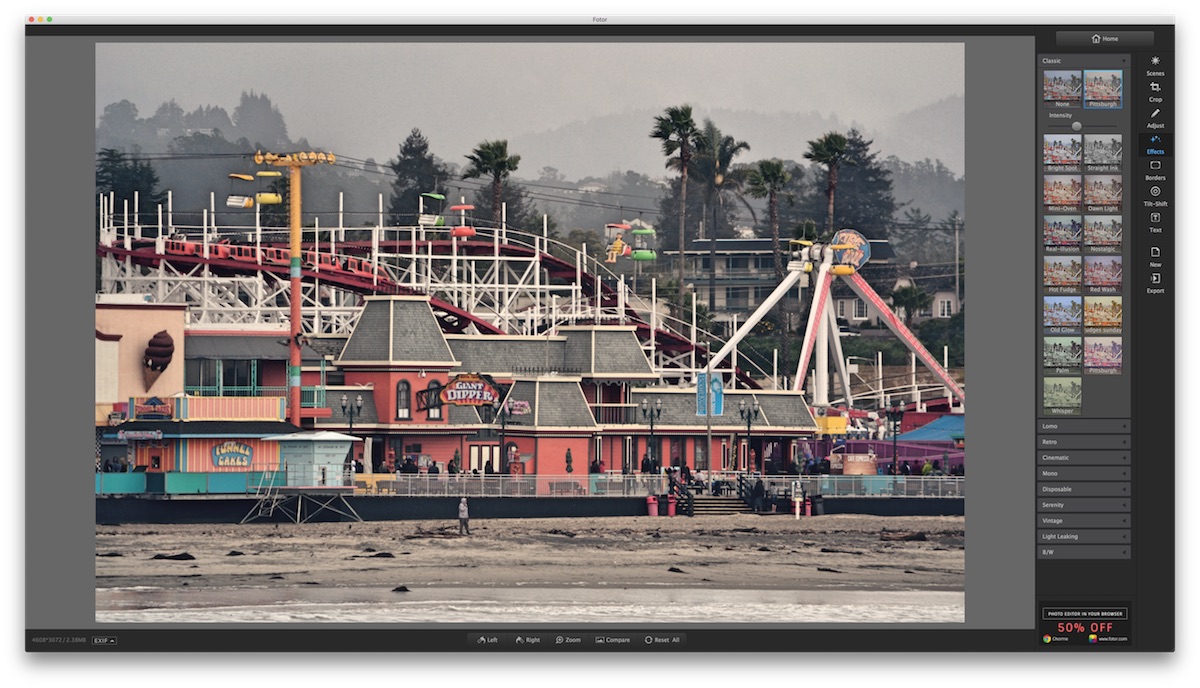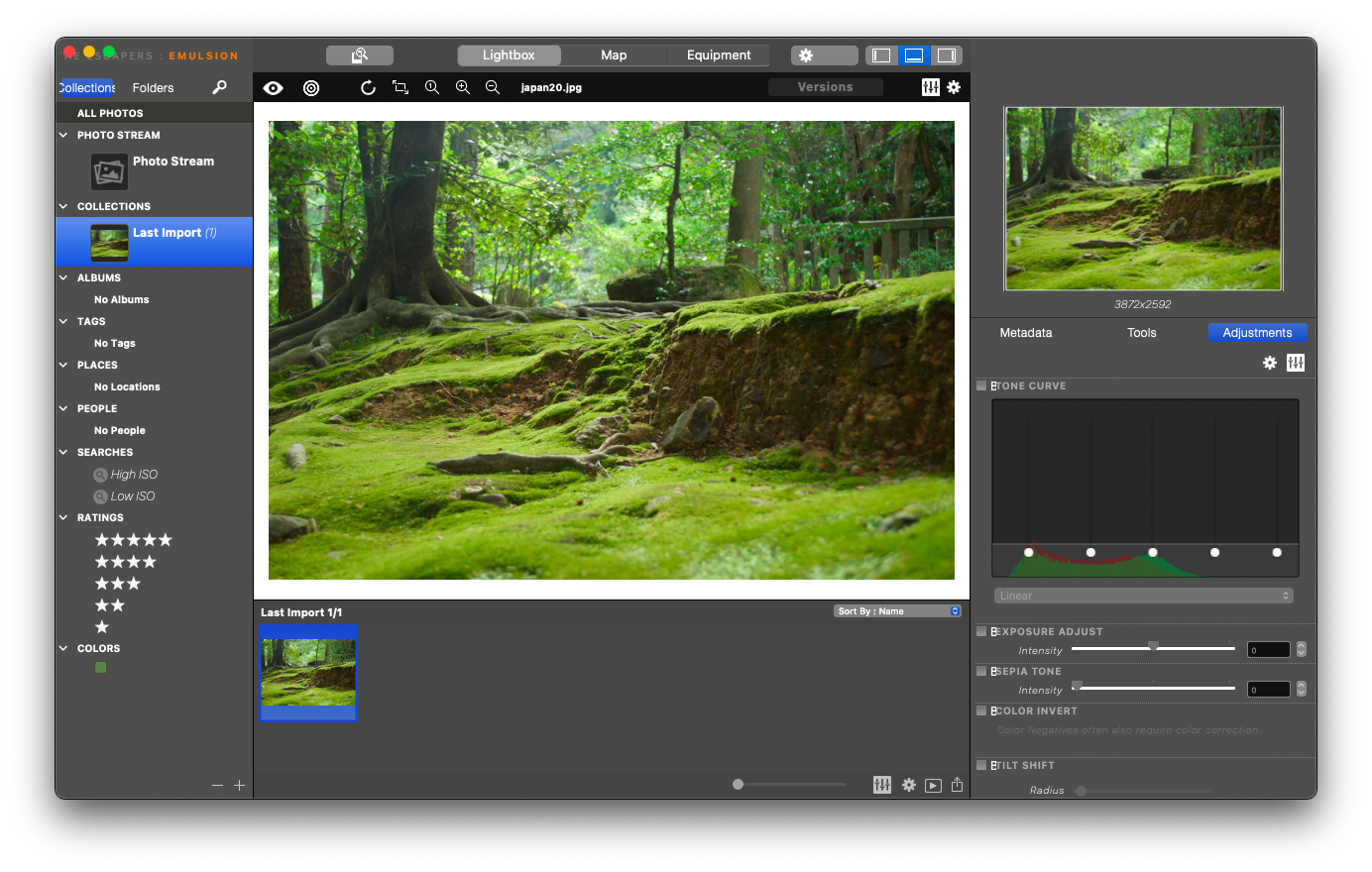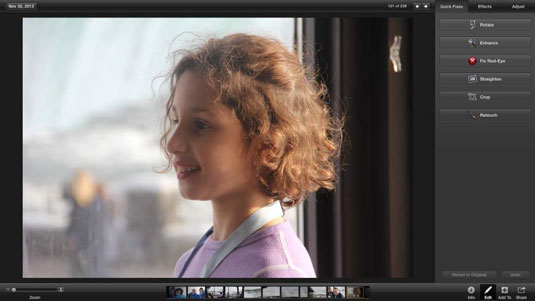
- #Easy photo touch up editor for mac skin#
- #Easy photo touch up editor for mac plus#
- #Easy photo touch up editor for mac free#
Alternatively, click the tool’s icon once to deactivate it and then click the icon again to reactivate.Powerful tools for perfecting your photos. To return to using pixels outside your brush cursor, toggle the Retouch tool off and on by tapping the R key on your keyboard twice (once to turn it off and again to turn it back on). While the blurry background made this retouch easier than if it had details, the final result is still impressive (bottom).īe aware that after setting a sample point, Photos will use that point for subsequent fixes you make with the Retouch tool in that editing session. Here’s the first sample point used to remove this bowl (circled top). Finally, I set a third sample point in the light-colored area at the upper-left and made a few brushstrokes across the area where the bowl used to be to lighten it. Then I set another sample point was set beneath the bowl, and made two more rows of brush strokes. In this example, I set a sample point above the dog bowl and made two rows of brush strokes before releasing the mouse button. Depending on the size of the area you’re fixing, you may need to set several sample points to make color and texture match better.
#Easy photo touch up editor for mac plus#
Next, release the Option key, and then click or drag over the area that needs fixing.Īs you work, the plus sign marks the area Photos is copying pixels from, and you see a white overlay marking your brushstrokes. To do it, Option-click the area you want to copy the pixels from-your cursor turns into a plus sign like the one circled below. This maneuver is handy for removing stuff that’s close to items you want to keep. If you don’t have good pixels (or enough of them) around the item you want to remove, you can copy pixels from elsewhere in the image by setting a sample point (iPhoto can’t do this). Here’s the before (left) and after (right) version after zapping blemishes and trimming both eyebrows. To undo all the changes you’ve made with the Retouch tool in the current editing session, click the Reset button at the lower-right. If necessary, press Command-Z to undo the last brushstroke you made and have another go at it, perhaps with a smaller brush or by repositioning the item within the brush cursor or by clicking instead of dragging (or vice-versa). Keep your eyes peeled for any smudging that occurs from the pixel blending Photos performs. Release your mouse button, and Photos copies nearby pixels and blends them into the area you dragged over.īy dragging with a really small brush, you can give your subject an eyebrow trim, as illustrated in this before (top) and after (bottom) image. When you do, Photos shows your brushstroke as a white overlay.
#Easy photo touch up editor for mac free#
If the item has plenty of free pixels around it, but it doesn’t fit within a round brush cursor-think stray hairs, power lines, a scar, and so on-click and drag with the tool instead. To keep from picking up adjacent colors-like the lips or shadow beneath her nose, make your cursor only slightly larger than the item you want to remove. If the item fits easily inside your cursor, a single click is all it takes to zap it.


You briefly see a white overlay marking the area you clicked, and when you release your mouse button, Photos blends the copied pixels into the surrounding ones.
#Easy photo touch up editor for mac skin#
If you’ve got plenty of good, clean pixels around the thing you want to get rid of-say, flawless skin around a blemish or a cloudless sky around a sensor spot-then single click it. Use the Zoom slider at the upper-left to zoom into the image and, if necessary, drag while holding down the spacebar to reposition the image so you can see the thing you’re about to remove.Ĭopy pixels from just outside the cursor’s edge To use it, select an image in Photos and then press Return to enter Edit mode, or press the Edit button in the upper-right of the toolbar. The Retouch tool works by copying pixels from one area of your photo to another and then blending them (blurring, really) into the pixels you click or drag atop.

As you’re about to learn, Photos’ Retouch tool is more powerful than the one in iPhoto. Happily, the Retouch tool in Photos for OS X can come to your rescue (it’s not available in Photos for iOS). Or maybe you captured an object in the frame you wish you hadn’t, or you scanned the image and introduced dust specks, or perhaps your camera’s sensor is a little dirty. After all, sometimes a perfectly good portrait is marred by small yet annoying stuff like a zit, makeup smudge, or a stray hairs. There’s nothing wrong with a little vanity.


 0 kommentar(er)
0 kommentar(er)
